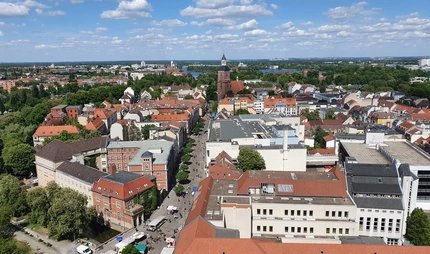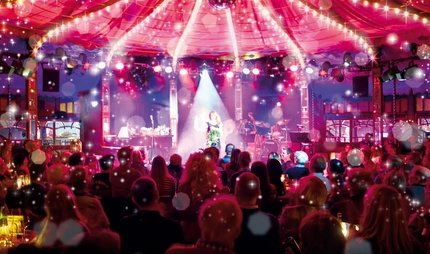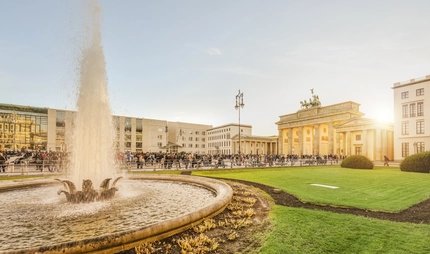
Our favourite places in Spandau
In summer, the tree-lined parks of old manor houses and crystal-clear water everywhere entice you to take a dip. And at any time of year, a Renaissance fortress with knights' armour and bat cellars as well as an old fort await your visit – today these serve as a film location for Hollywood movies.
What you need to know about Spandau
From the air, Berlin’s most westerly borough largely appears to be meadows and green forests. The waters of the River Havel and large and smaller lakes glitter in the sunlight.
And this birds’-eye-view is not an illusion – Spandau’s forests are perfect for cyclists and hikers, and the lakes ideal for swimmers and canoeists. The water quality is excellent, with many lake shore and river beaches packed with local families in summer. If you’ve always wanted to paddle your own canoe, then this your chance! Hire a kayak or canoe and glide down the narrow meandering channels of the River Havel past lush meadows and areas of natural beauty – stopping for a picnic on the shores of the forested Pichelswerder peninsula. Sports and countryside fans also enjoy cycling along the River Havel, stopping now and then to dip their feet in the water. On the way north, you can also find a fascinating piece of Berlin history – an old East German watchtower, that is already one of Brandenburg's monuments.
Explore the History
Spandau, one of Berlin’s largest boroughs, has a wealth of history to explore. Its roots go back to the thirteenth century when it was founded as a medieval fortress town. Down the centuries, it has experienced many changes – and the traces are evident everywhere. The Zitadelle Berlin (Citadel), the borough’s most impressive historical monument, is just a few minutes’ walk from Spandau old town.
One of the best preserved Renaissance fortresses in all Europe, the Citadel not only boasts many fascinating treasures. The long bastion walls, up to four metres thick with vaulted corridors, also regularly attract around 10,000 bats for their winter hibernation. Just a few steps further on, you are among the quaint cobbled streets and alleyways of the Kolk quarter, the oldest part of Spandau.
The Marienkirche (Saint Mary’s Church), originally dating from the eighth century, lies among trees set back from the banks of the River Havel. Here, you can also find half-timbered houses and parts of the old city wall.
Spandau old town
Attractive Spandau old town with its many shops, restaurants and cafés is Berlin’s largest uninterrupted pedestrian zone. But today’s Spandau is not just about history – it is also a modern and vibrant part of Berlin. Spandau is the city’s biggest industrial location and home, for example, to the only production site for BMW motorbikes in the world.
The borough’s long tradition as a centre of industrial production is also evident in the Großsiedlung Siemensstadt housing estate, now one of Berlin’s six UNESCO World Heritage Modernist housing estates. Primarily constructed to house workers at the nearby Siemens factory, the western section of the estate lies in Spandau as does the nearby garden town of Staaken, once similarly a model for the city’s housing reform movement.
Our tips for Spandau
Take a trip to some famous locations of Berlin modernism: Whether it's the large Siemensstadt housing estate, a UNESCO World Heritage Site since 2008, or the Gartenstadt Staaken or the Finnhaussiedlung estates from the post-war period – you will find architecture of global historical significance here.
In Spandau you can also go on pilgrimage. The pilgrimage trail, which is about 75 km long, connects 24 Protestant and two Catholic churches in the district and leads past a real oasis that also delights friends of horticulture: the Dr. Max Fraenkel country house garden.
Gutspark Neukladow
Anyone out and about on a cycling or walking tour in Spandau’s green south is sure to plan in a visit to the beautiful manor park at Gutspark Neu Kladow, set on the shores of the River Havel as it widens to form the Wannsee lake. With its old trees and winding paths, the grounds are ideal for strolling and relaxing. For snacks and refreshments, head for the park’s early neo-classical manor house. In the nineteenth century, this was home to the mother of Otto von Bismarck, Germany’s “Iron Chancellor”. Today, the building houses the popular Gutshaus Neukladow, with its spreading beer garden offering great views out across the water.
The scenic Gutspark Groß Glienicke manor park and grounds are also set on the shores of a lake. Here, you can find traces of more recent history. In the post-war years, the border between West and East Germany ran through the centre of the lake and the park – and you can still see the remains of the border complex today.
You might find this also interesting
You have already discovered a lot, but still have a little time left? Visit more sights and attend more events.


















